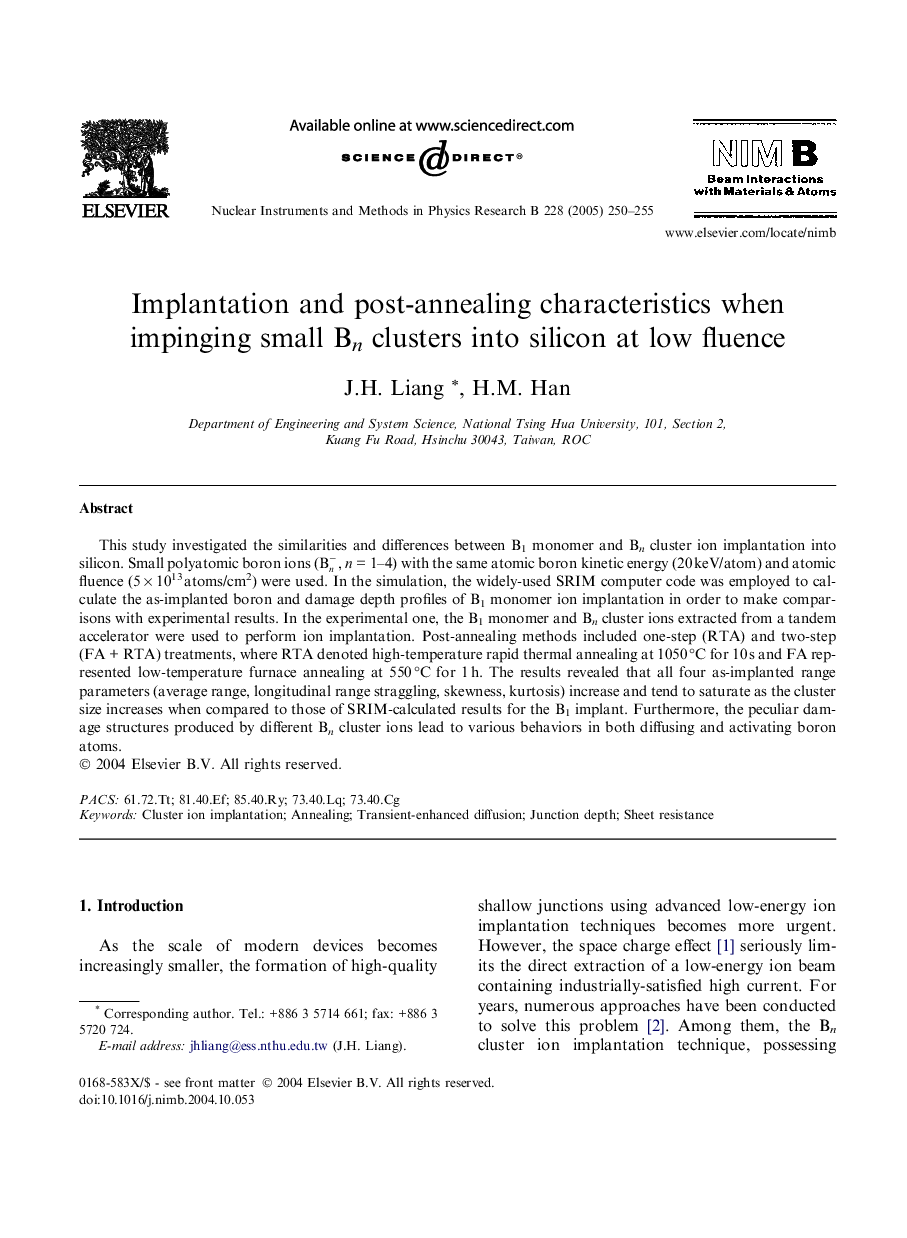| Article ID | Journal | Published Year | Pages | File Type |
|---|---|---|---|---|
| 9818414 | Nuclear Instruments and Methods in Physics Research Section B: Beam Interactions with Materials and Atoms | 2005 | 6 Pages |
Abstract
This study investigated the similarities and differences between B1 monomer and Bn cluster ion implantation into silicon. Small polyatomic boron ions (Bn-, n = 1-4) with the same atomic boron kinetic energy (20 keV/atom) and atomic fluence (5 Ã 1013 atoms/cm2) were used. In the simulation, the widely-used SRIM computer code was employed to calculate the as-implanted boron and damage depth profiles of B1 monomer ion implantation in order to make comparisons with experimental results. In the experimental one, the B1 monomer and Bn cluster ions extracted from a tandem accelerator were used to perform ion implantation. Post-annealing methods included one-step (RTA) and two-step (FA + RTA) treatments, where RTA denoted high-temperature rapid thermal annealing at 1050 °C for 10 s and FA represented low-temperature furnace annealing at 550 °C for 1 h. The results revealed that all four as-implanted range parameters (average range, longitudinal range straggling, skewness, kurtosis) increase and tend to saturate as the cluster size increases when compared to those of SRIM-calculated results for the B1 implant. Furthermore, the peculiar damage structures produced by different Bn cluster ions lead to various behaviors in both diffusing and activating boron atoms.
Keywords
Related Topics
Physical Sciences and Engineering
Materials Science
Surfaces, Coatings and Films
Authors
J.H. Liang, H.M. Han,
